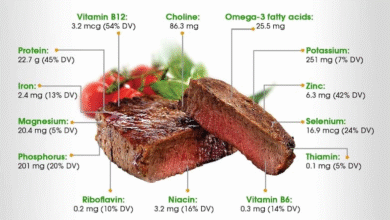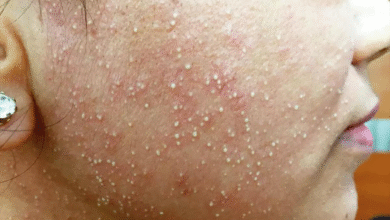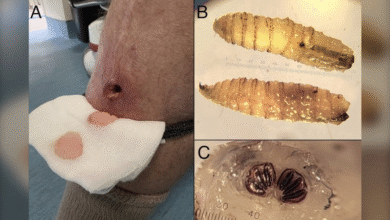Powassan Virus: A 5-Week-Old Baby’s Battle for Life

Powassan virus, a tick-borne illness, has become an alarming public health concern, particularly after a recent incident involving a 5-week-old baby in Boston who was diagnosed with the virus following a tick bite. This virulent illness is transmitted quickly through infected deer ticks, leading to serious health complications, including fever, seizures, and even brain damage. Health experts highlight that while Powassan virus transmission is relatively rare, its increasing occurrence underscores the importance of awareness regarding tick bite symptoms and treatment options. Preventing tick bites through effective strategies such as using insect repellents and protective clothing becomes crucial in mitigating the risks associated with Powassan virus and other tick-borne diseases. Understanding the seriousness of this virus can empower individuals to take preventive measures and recognize potential illness early on.
The Powassan virus, often referred to as a rapidly spreading tick-borne infection, poses significant health threats, particularly in regions with high deer tick populations. When discussing tick-related diseases, it’s essential to be informed about symptoms associated with tick bites, which can include fever and confusion, indicating possible Powassan infection. Additionally, raising awareness around Powassan virus treatment approaches is vital, as no specific antiviral therapies exist, leaving symptomatic management as the primary focus. Personal protective measures, including diligent checking for ticks after outdoor exposure and employing preventative strategies, play a critical role in thwarting this virus’s spread. By recognizing the seriousness of tick-borne infections like the Powassan virus, communities can enhance their public health efforts to reduce infection rates.
Understanding the Powassan Virus: What You Need to Know
The Powassan virus is a serious concern for public health due to its rapid transmission through tick bites, particularly from infected deer ticks. Unlike Lyme disease, which has a longer incubation period, the Powassan virus can manifest symptoms much quicker, usually within one to four weeks post-bite. Initial symptoms include fever, severe headache, and vomiting, making it crucial for individuals who have been bitten by ticks to monitor their health closely. Health officials have noted that although Powassan virus cases are low, they have been steadily increasing, particularly in areas like the Northeast and Great Lakes regions where tick populations thrive.
Diagnosis of the Powassan virus can be challenging, as some infected individuals experience mild symptoms while others may face severe neurological complications. Unfortunately, there is currently no specific antiviral treatment for those infected, turning the focus primarily on managing symptoms via supportive care. It’s particularly concerning for vulnerable populations such as children and the elderly, who are at a higher risk of severe outcomes. This stark reality highlights the importance of awareness and education around this tick-borne disease, especially in regions where tick encounters are common.
Identifying Tick Bite Symptoms Early
Recognizing tick bite symptoms is critical for timely intervention and treatment. After a tick bite, individuals may initially experience redness or swelling at the bite site, but more concerning signs like fever, chills, and body aches may follow within a week, potentially indicating exposure to pathogens like the Powassan virus. It’s important to note that ticks are small and can go unnoticed, thus emphasizing the need for vigilance after outdoor activities. Engaging in preventive measures such as wearing protective clothing and using EPA-registered insect repellents can significantly reduce the risks associated with tick bites.
Moreover, some individuals may not show any symptoms at all, remaining asymptomatic while unknowingly harboring the virus. This lack of awareness can lead to further transmission and complications, highlighting the need for public health initiatives aimed at educating communities about the symptoms of tick-borne diseases. By fostering a culture of awareness, especially during peak tick activity months from May to July, we can better equip ourselves to handle potential infections swiftly and effectively.
Effective Powassan Virus Treatment Options
Currently, there is no specific antiviral therapy approved for treating infections caused by the Powassan virus. Treatment usually centers on managing symptoms, which can range from mild to severe, including significant neurological impairments. Individuals diagnosed with severe manifestations may require hospitalization, particularly when experiencing complications like seizures or confusion. Healthcare providers often focus on stabilizing the patient’s condition through supportive care, which might involve pain management and intensive monitoring in a hospital setting.
As research continues into the Powassan virus and its effects, the medical community advocates for rapid diagnosis and early intervention as the best strategies to mitigate serious complications or fatalities. With such limited treatment options, the emphasis should rest on preventing infections from occurring in the first place through education and awareness among the public about the risks associated with tick bites.
Preventing Tick Bites for Better Health
Preventing tick bites is vital for safeguarding individuals from various tick-borne diseases, including the Powassan virus. Public health experts recommend several effective strategies: maintaining grassy areas in yards, using insect repellents that contain at least 20% DEET, and wearing light-colored clothing that makes it easier to spot ticks. Additionally, performing thorough tick checks post-outdoor activities is crucial, especially for those living in areas with high tick populations. These proactive measures can significantly reduce one’s risk of contracting the Powassan virus or other associated illnesses.
Moreover, understanding tick behavior plays an essential role in prevention. Nymph deer ticks, the primary vectors for the Powassan virus, thrive in wooded and bushy areas, making it essential for anyone venturing into these environments to take precautions. By creating ‘tick moats’ using gravel or wood chips around properties, individuals can deter tick migration into residential areas, further minimizing the risk of bites and potential infections. Collaborative community efforts to promote awareness and preventive practices are thus necessary to combat the spread of tick-borne diseases effectively.
The Growing Concern of Tick-Borne Diseases
The incidence of tick-borne diseases, including the Powassan virus, has seen a troubling rise in recent years. Factors contributing to this prevalence include climate change, which expands tick habitat, and increases in deer populations that facilitate the spread of ticks. As more people spend time outdoors, particularly during summer months, the chances of encountering ticks and potentially contracting diseases like Powassan increase. This trend calls for urgent public health responses to educate the community and promote preventive measures.
Efforts to educate the public about the risks associated with tick bites and the diseases they transmit are crucial in reducing incidences of infections. Increased awareness can result from community outreach programs, local health campaigns, and collaboration with wildlife management initiatives to track tick populations and inform residents. By acknowledging the rising concern of tick-borne diseases and implementing effective prevention strategies, communities can significantly lower the risks to their health and well-being.
Symptoms of Powassan Virus Infections
The symptoms associated with Powassan virus infections can vary significantly, with some individuals experiencing mild flu-like symptoms while others endure severe neurological deficits. Early signs might include fever, headaches, fatigue, and vomiting, but these can quickly escalate to confusion, seizures, and loss of coordination in more severe cases. This range of symptoms makes it critical for healthcare providers to have a high index of suspicion when treating patients with tick exposures, as prompt recognition can lead to better management outcomes.
Additionally, the CDC has reported that 10-15% of severe Powassan cases can result in fatality, highlighting the potentially lethal nature of this virus. Long-term health consequences are also prevalent, with many survivors facing ongoing cognitive difficulties or physical disabilities. Given this potential for serious outcomes, continuous education and awareness surrounding the symptoms and risks associated with the Powassan virus are paramount for facilitating timely medical intervention.
The Intersection of Tourism and Tick Activity
During peak tourist season, the interplay between increased outdoor activities and tick populations heightens the risk of tick bites and subsequent infections, including the Powassan virus. Areas like Martha’s Vineyard see an influx of visitors who may be unaware of the tick risks, creating potential exposure especially in natural settings popular for hiking and recreation. Thus, public awareness campaigns that inform tourists about the importance of preventative measures are crucial for community health.
Tourism-driven outdoor engagement during the warmer months underscores the need for local health departments to disseminate information regarding protecting oneself from ticks. Effective strategies include using repellent, wearing appropriate clothing, and conducting post-activity tick checks. Ensuring that visitors are educated about the risks will help in mitigating the spread of tick-borne diseases and safeguarding both tourists and residents alike.
Community Initiatives Against Tick-Borne Diseases
Community initiatives play a vital role in curbing the spread of tick-borne diseases, including the Powassan virus. Local governments and health departments can collaborate to promote awareness campaigns that target residents and tourists alike, focusing on preventive measures and best practices to avoid tick bites. Workshops, seminars, and informative brochures can aid in disseminating this essential information to a broader audience, ensuring everyone is well-informed about the risks associated with ticks and Powassan virus infections.
Furthermore, community monitoring programs can track tick populations and their infection rates, providing valuable data that can be used to direct intervention efforts more effectively. By uniting community resources and fostering a culture of vigilance against tick-borne diseases, populations at risk, especially those in endemic areas, can benefit from enhanced protection and reduced incidence of Powassan virus and other associated illnesses.
Long-Term Effects of Powassan Virus Infections
Survivors of Powassan virus infections may experience long-term health repercussions that can significantly impact their quality of life. According to medical professionals, many patients suffer from chronic symptoms, including persistent headaches, memory issues, and decreased muscle control. As a result, the Powassan virus not only poses immediate health risks but also raises concerns about ongoing neurological complications that affect individuals long after their initial diagnosis.
Understanding the long-term effects of the Powassan virus underscores the necessity of effective prevention strategies aimed at reducing transmission risks. Individuals who have encountered ticks should remain aware of potential symptoms even after the bite and seek prompt medical attention if new neurological signs arise. Raising public awareness about these long-term impacts can help foster a community that prioritizes prevention, ultimately leading to better health outcomes for those at risk.
Frequently Asked Questions
What are the symptoms of Powassan virus after a tick bite?
Symptoms of Powassan virus typically include fever, headache, vomiting, and weakness, which may appear one to four weeks after a tick bite. Some individuals may remain asymptomatic, while others can develop severe neurological complications.
How is Powassan virus transmitted through tick bites?
Powassan virus is transmitted through the bite of an infected deer tick. Unlike many other tick-borne diseases, the virus can be transmitted more rapidly, often within hours of the tick attaching to the host.
What are the treatment options available for Powassan virus infection?
Currently, there is no specific antiviral treatment for Powassan virus. Management typically focuses on alleviating symptoms and addressing complications, such as seizures, as they arise in patients.
How can I prevent tick bites and reduce the risk of Powassan virus?
To prevent tick bites and reduce the risk of Powassan virus, use insect repellents with at least 20% DEET, wear protective clothing, and conduct thorough tick checks after outdoor activities. Keeping grass trimmed and using mulch around property can also help deter ticks.
What is the incubation period for Powassan virus after a tick bite?
The incubation period for Powassan virus ranges from one to four weeks after a tick bite, which is quicker compared to many other tick-borne diseases.
Is there a vaccine available for Powassan virus?
Currently, there is no vaccine available for Powassan virus, making prevention through tick bite avoidance critical for reducing infection risk.
What long-term effects can occur from Powassan virus infection?
Long-term effects of Powassan virus infection may include neurological issues, such as headaches, memory problems, and decreased muscle strength, with reports suggesting that 10% to 15% of severe cases can be fatal.
How common are Powassan virus cases in the U.S.?
Powassan virus cases are rare, with an average of seven to eight diagnoses reported each year in the U.S., though cases have been increasing in regions such as the Northeast and Great Lakes.
What actions can I take to make my yard less inviting to ticks and prevent Powassan virus?
To make your yard less inviting to ticks and reduce the risk of Powassan virus, maintain short grass, remove leaf litter, and consider creating a ‘tick moat’ using gravel or wood chips to limit tick migration.
Are there specific groups at higher risk for severe Powassan virus disease?
Yes, individuals at higher risk for severe disease from Powassan virus include older adults, children, and those who are immunocompromised.
| Key Point | Details |
|---|---|
| Incident Overview | A 5-week-old baby, Lily Sisco, was bitten by a tick resulting in severe illness. |
| Symptoms | Initial symptoms include fever of 102°F, seizures, and possible brain damage. |
| Powassan Virus | Transmitted quickly via infected deer ticks, with an incubation period of 1-4 weeks. |
| Fatality and Risks | 10-15% of severe cases are fatal, with long-term neurological damage for survivors. |
| Prevention | Employ insect repellent, wear protective clothing, and conduct tick checks. |
Summary
The Powassan virus is a serious tick-borne illness that poses significant health risks, especially to young children and immunocompromised individuals. This emerging public health concern requires increased awareness and preventive measures to mitigate the risk of tick bites and subsequent infections.




